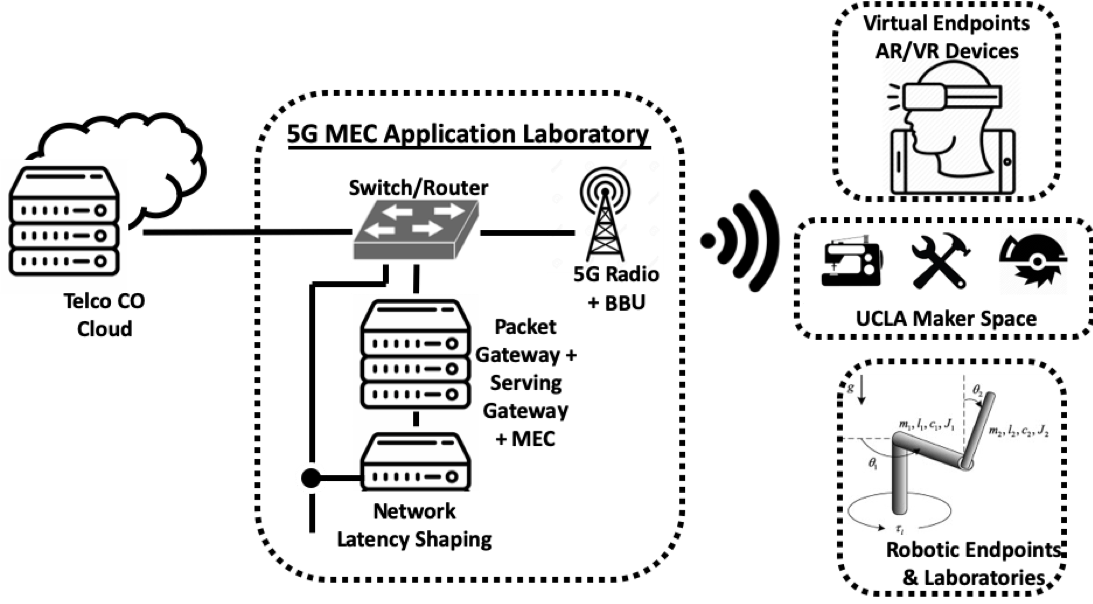The figure above illustrates the key components of this laboratory. We consider this a pilot since only one or two 5G radio base stations will be deployed initially with modest edge compute capability. The radio(s) are in the process of being placed in strategic locations (in between Engineering IV and Boelter Hall) such that the limited range of millimeter-wave signals will have maximal reach to multiple user locations. The radio and the associated broadband unit connects through a direct physical connection to an ethernet switch/router. MECA Lab’s local termination of the packets is to a local rack of server(s) and network equipment(s) within the laboratory. The current location is on the 5th floor of Engineering 4 Building. This local rack serves as a pilot implementation of the local drop point of a campus mobile edge compute (MEC). The corresponding packet core software from the 5G provider to deliver the payload data to the application (virtualized or bare metal) running on the local MEC. By hosting the applications locally, the round-trip performance of an application serviced by the local compute to the wirelessly connected client endpoints will suffer the least latency and performance penalty. The router can also be configured to connect the tower to the 5G provider’s (Verizon) central office for normal 5G services. An additional networking equipment is inserted into the network path that enables variable latencies to be inserted to the data packets of a particular network flow. We are currently using the Network Emulator II offered through Ixia (a subsidiary of Keysight Corp.). The unit mimics the latency and congestion profile of internet traffic or any desired characteristics down to microsecond resolution.
The early users of MECA Lab are within the laboratory itself since the environment will need to be carefully calibrated. Students using the laboratory are under careful direction of the laboratory director and managers. A variety of research groups can utilize this facility to explore performance of their specific application in a 5G MEC-enabled environment.
Once the equipment is setup with remote interface for programming/configuration, the user base can easily be expanded. Multiple users are enabled by the optimal location of the radio antenna. Users with software applications such as ones that targets virtual or augmented reality or involves real-time audio/visual feedback can deploy remotely. Additionally, in Boelter Hall, directly across from the position of the antenna is the primary Makerspace of the School of Engineering. Two floors above the makerspace is the space allocated for an open undergraduate robots laboratory similar in concept to the makerspace except targeting robotics applications. With easy connection to both design laboratories, a broad range of students can then create applications that are physically actuated rather than virtual.

